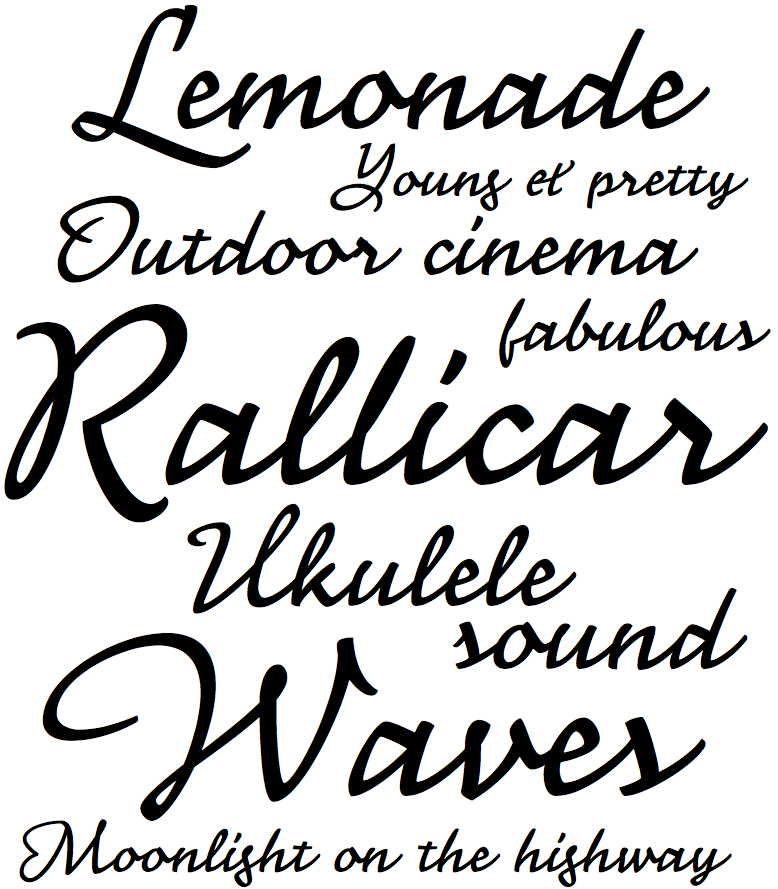The typeface Mistral could be considered the default choice for evoking French 1950s lettering. Nouvelle Vague offers a less obvious but still direct reference to the style. The name already gives unmistakable hints at its source of inspiration. Energetic, loose, occasionally edgy, and with quite a soupçon of retro, it is a font du jour with the temperament of mid 20th century advertising.
Although, of course, issued in OpenType format, Nouvelle Vague comes in just one weight with comparably few fancy features. Instead of including the countless ligatures or contextual alternates that fonts today use to emulate hand-lettering, for example MVB Sacre Bleu, Elena Albertoni focused on simple, impactful letters that look lively and natural even when OT features are switched off or can’t be applied (still the case in some applications and browsers, but also when you encounter a lazy user, like — believe it or not — me). Alternatives are provided for letters that frequently recur like ‘i’, ‘l’, ‘n’, ‘r’ but strangely not ‘a’ or ‘e’. Also, a small set of ligatures are included, mostly combinations with ‘f’ and ‘b’ although I don’t see the urgent need for those. The ‘AE’, ‘OE’, ‘&’, and ‘ß’ are particularly nice.
The uppercase characters have a different rhythm and are more expressive. Here, too, a few alternates are provided, e.g. smaller versions of vowels to accommodate accents. The caps in general are quite large. My guess is that they look best as initial letters of single words or in languages which don’t use uppercase letters as frequently as German. But the main field of application for Nouvelle Vague isn’t long continuous text anyway. I see it in all kinds of jobbing work, posters, headlines in print or on the web, packaging or display, and — like where it all started — as a piece of lettering for a French hotel.
